Posts tagged with Delay-plus
Here you can find a listing of all posts with the tag Delay-plus on my page.
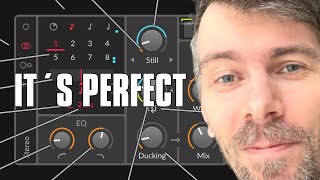
May 11, 2022 Tutorial
In this video, I show off the new Delay+ device in Bitwig Studio 3.4.## I demonstrate how it behaves like a tape echo or delay plug in, and show off its features, like ducking, repitching, cross-feed modulation, and diffusion networks. I also show how it can be used for sound design, and give some ideas on how to use it.
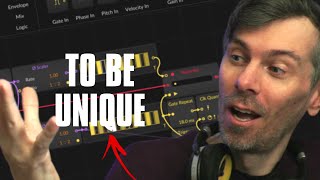
Jan 19, 2022 Tutorial
In this video, I showed how to create various effects, such as phasers, flangers, chorus, low pass and high pass filters, reverbs, and pitch effects, in the Bitwig Grid. I demonstrated how to use FX Grids and Chain Devices, as well as how to manipulate the delay time of a signal with an LFO and the Time Shift Device. I also showed how to create a multi-tap delay with the Long Delay and a Multi-Lay, as well as how to use the gates module to record and playback audio. Finally, I discussed the use of an AD envelope to reduce clicks in the signal.
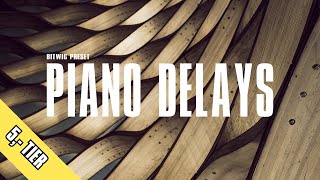
Apr 12, 2021 Tutorial
In this video, I showcase my new piano delays preset package, which is available on my Patreon for the five bucks tier. I demonstrate how it works by using the new electric keys package from bitwig studio. I explain how the seven presets work, such as creating fragments, slowing down and pitching up the delay signal, and creating a nice evolving atmosphere. I also mention how it can be used to sample for a sampler. I invite viewers to subscribe to my Patreon for the five bucks tier to download this package and have some fun.
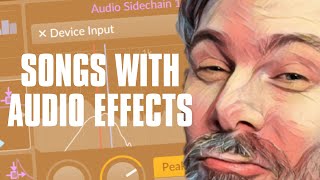
Mar 16, 2021 Tutorial
In this video, I showed some of the tricks I used to create a song out of just a drum loop. I used a resonator bank with a step sequencer and an audio side chain to extract the gate signal from the drum loop. I also used a pitch shifter, distortion, peak limiter, reverb, delay and a halftime plugin to shape the sound. I also used a quantizer, a comp filter and the harmonic series to add some extra elements. Finally, I used a limiter for quick mastering. I hope this video gives you some ideas or inspiration to try out in your own environment.

Mar 15, 2021 Tutorial
In this video, I demonstrate how to use delay in Bitvic Studio. I explain how to use the delay one effect to offset audio signals, create echo effects, and even create phasing effects and filters. I also discuss the feedback FX box and explain how to use it to create glitch effects by pitching and filtering audio signals.

Feb 01, 2021 Tutorial
In this video, I demonstrated how to create deterministic melodies with the sign mode in the Polygrid. It starts with setting up a face input to get a steady signal. I then used a sign mode to transform the signal, followed by an oscillator and amplifier to produce sound. I also used a pitch scalar, pitch quantizer and sample and hold to create a pitch signal that is within an audible range. I then used a clock quantizer to synchronize the signal to the transport, and a trigger module to create a static pulse. Finally, I showed how to use random modulators to create evolving patterns and an average module to even out the signal.
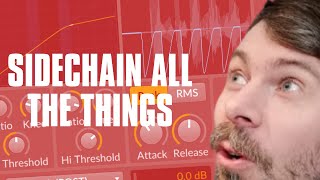
Jan 13, 2021 Tutorial
In this video, I showed how easy it is to side chain in Bitwig Studio. I demonstrated four different methods of side chaining, which include using a compressor plug-in, an audio sidechain modulator, a note sidechain, and an EQ plug-in. I also showed how to use the sidechain FX box to apply audio effects to the sidechain signal before it hits the analyzer. Lastly, I showed how to use the transient control to amplify or reduce the attack and sustain phases of a signal using a sidechain signal. Side chaining is not only for reducing the volume of a bass sound, it can be used for many creative effects.

Dec 07, 2020 Tutorial
In this video, I showed how to use BitwigStudio's new FX Fader and Instrument Fader container devices to combine multiple instruments, audio FX and VSTs. I demonstrated how to use the modulator curves to create smooth transitions between layers and how to use the devices to add different effects to a hip hop loop and a synth patch. I also highlighted how to use the FX Fader to add random preset layers to a polygrid. Finally, I encouraged viewers to download the free presets and leave comments with any questions.

Oct 29, 2020 Tutorial
In this video, I showcase my three new presets - Berlin City, Berlin Verb and Berlin Tape - that I created for my five bug subscribers on YouTube and Patreon. I sampled noises from the streets of Berlin to analyze certain things, and I used a special method to create random multiple values in the grid with chapicef modules. I also mapped some MPE sensors to some knobs so you can use your MPE devices for this preset. With the remote controls and the snob, you can change the noise texture, the timing, the envelope, the stereo width, the pitch drift and the reverb. Berlin Tape is a tape emulation that you can bring in a lot of dirt and change the speed of the noise sample. I hope this video was helpful and I look forward to hearing your feedback.
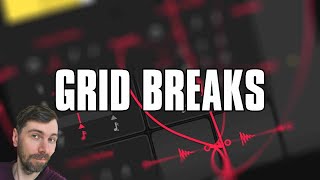
Aug 03, 2020 Tutorial
In this video, I showed how to use Bitwig Studio’s FX Grid to automate drum loop editing tasks. By using Merge modules, Value knobs, and synchronization devices, it’s possible to offset drum loops to different time ranges and add breakdowns and fill-ins with minimal effort. I also showed how to use a Mod Delay to switch between different signals, as well as how to automate using a Button and a Macro Knob.
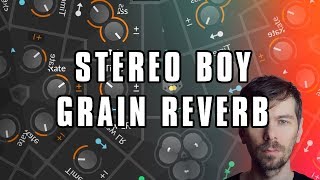
Jul 22, 2019 Tutorial
In this video, the creator introduces two new devices or presets for Bitwig Studio 3. The first one is called Stereo Boy, which splits an audio input into two paths. One goes through a stereo splitter, all pass devices, and a stereo merge, creating a wider stereo effect. The second path includes a delay that is modulated slowly. The parameters can be adjusted using micro knobs, and the device can be used to add a weird pitch modulation effect. The second device is called Grain Reverb, which adds different pitches to the sound using pitch shifters and filters on multiple layers. The grain rate and mix can be adjusted for each layer, creating a thick reverb sound. The cutoff and pan can also be modified. The creator demonstrates the sound of both devices and offers them for download on their GitHub repository.
More Tags to choose from:
posts Bitwig Deutsch Tutorial FromScratch Talk German Skyence articles Guidelines Webtool Tempo bitwig-guides Audio-FX Brain Neurosience Chords Knowledge PDF music-videos Ambient Hardware Jam Drum-and-Bass Music Mixtape fawm Behringer Moog polarity-music Grid Rhythms oscillators Modulation Frequency Modulation Phase Modulation synthesizers Video Editing Gravity Modulator Modulator Synth Midi Step-Sequencer Granular Generative Sampling Plugins Sound-Design Presets Glitch-Hop Bass Synthesis Wave Table Synthesizer FX Section Lab Update Update Preset Community FX Automation music-production Let-It-Go Decision-Making Creativity Modulators Synths Melodies Note-Grid Percussion Modular Workflow Opinions Resonator Kick Drum Pads Track from Scratch Mixing Delay Delay-plus Reverb Auto gain staging Hornet LU meter Normalizer Additive-Synthesis Sketch VSTs Filter Noise Resonance MPE Controllers Groove Loudness Synthwave Outrun Challenge Note-FX Poly-Synth Audio-Effects Bitwig-3.1 Replace VST Polyphonic MPE Roli Tips-Tricks Poly-Grid Bitwig-3.2 Synthesizer Racism Music Industry Social Issues Equality Inspiration Physical-Modeling Convolution Evolving-Sounds Live streaming Discord bot Interaction Distortion Sampler Grain Sonible Analysis EQ-plus Drums Compressor Feedback EQ Glitch Comp Filter Ultra Reservoir Polyphonic Mode fm-synthesis Polysynth VCV-Rack Comb Filter Modal Synthesis Peak Limiter EQ-5 Wave-Shaping Saturation Bitwig-3.3 Bitwig-4.4 FX-Grid Mid-Side Split Follower Threshold Max Value EQ-2 Randomization Atlas Infiltrator Devious-Machines Pitchmap Zynaptiq Harmony-Theory Bespoke DAW Unfilter Melodic-Techno Transposer Transient-Shaper MinimalAudio XLN-Audio XO Sononym Cosmos Arturia Valhalla FM8 Native Instruments Bleass Psych Limitation Clap free Extension Eurorack Grid-From-Scratch Arrangement dpMeter tbProAudio Diva Monark Gridnik Pure-Verb Pure-Comp Pure-Limit Launchpad Instrument Micro-Arrangement Global-Modulators Workflow-Tips Risers Transitions Phaser Vector Synthesis Waveforms Bleass Voices Bitwig Studio Plugin Pitch Shifter Vocoder MIDI Input Polymer Wavetable Recording Learning Problem-Solving Research wisdom Psychology Wave Table Plug-ins Gear PlugData OpenSource Interface Clever-Audio-Plugin-Clap Sidechain Polygrid Pitch Effects AI download FM-synths machine-learning soniccharge Sound-Generator SynPlant Compiler VST-Plugin Heavy-Compiler Formant Current Granular-Synthesis Vector XY-Instrument Touch-Designer Video-Edit Visuals Beginners Bitwig-5.1 Sync Signals xlnaudio additive Sequencer Euclidean Bitwig-5.1.2 No-Grid Stock Finishing-Songs Jazz M1 Clip-Launcher Polymeter Polyrhythm AudioThing Lese Thoughts Browser Techno Routing Spectral paulxstretch Triton tests Grains Patreon Utility Analogue Bitwig-5.1.6 Kilohearts Project Tegeler Bitwig-1.3.16 Bitwig-5.1.7 Amiga Trance Theming Bitwig-5.2b1










